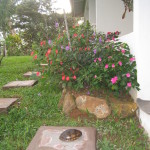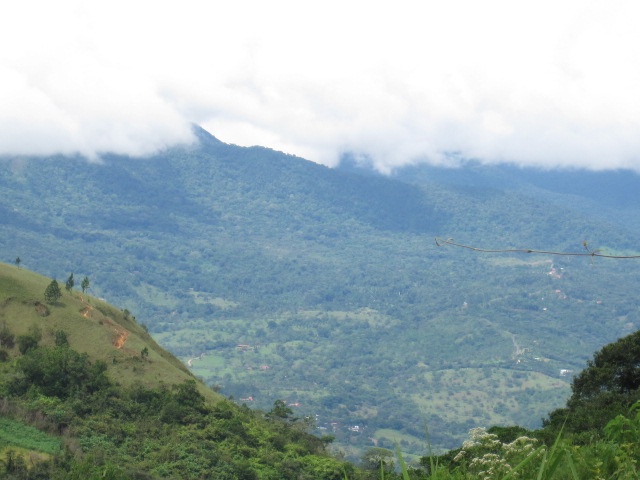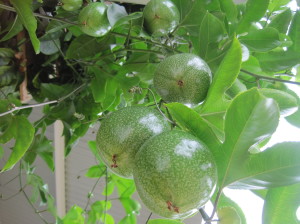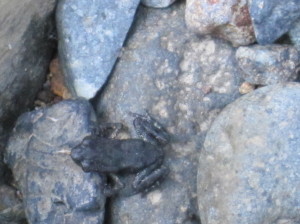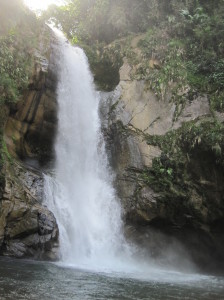Celestino and I don’t sell real estate – nor are we selling any property, but we have had several guests come to explore the area for potential investment / retirement. To date, we’ve kept out of the discussions and business surrounding real estate in Santa Fe as our primary interest is our inn and ecotourism.
We do get several questions and thought we would take a stab at expression our opinions. This article is part of a two part series with opposing view points from Cele and myself on the expanding focus on the real estate market in Santa Fe. I tend to think that people don’t know what they’re getting in for, while Cele thinks it could be a good move.
Santa Fe is a small village in the mountains of Panama. It is a rural and beautiful area. The poverty level in the district is high, it is remote, and there are few foreigners. Most people in Santa Fe are nice, but wary of foreigners and the influence of land value, jacking it up beyond the reach of many locals. There has been a sign spray painted “gringos vayanse” or gringos leave!, on the entrance to town. Others welcome tourists, but say that they want the tourists to go back after they finish their visit – no to gringolandia. It’s not so simple as that, and development is bound to happen.
My husband and I don’t sell real estate, aren’t looking to sell. We understand why people might want to move to Santa Fe, but from people with no horse in the race, these would be my top considerations.
So you’re thinking of moving to Santa Fe, Veraguas…
1) There is no healthcare or emergency care near.
In town, there is a Centro de Salud, which is about as helpful as the nurses cabin when you were a boy or girl scout at camp. Got a cold – no problem. Need to check your temperature or blood pressure- got that covered. Anything else, you’ll be making a two hour round trip to Santiago. Over the past weekend, there was a severe traffic accident in Santa Fe. It took about 2 hours from when the accident occurred to when people reached medical help in Santiago, one person died in route.
In Santiago itself, medical care isn’t that complete or great. For example, after my father-in-law’s stroke, he was taken to the Santiago hospital. An internal medicine doctor could not see him for two days, as he is stationed out of Aguadulce and only travels to Santiago 2 or 3 times a week. It’s true that the cost of health care is cheaper, but there is a reason for the cheaper health care – less service.
2) Are you thinking of moving here because of the cost of living? If so, it probably isn’t the best reason.
I’ve heard people say that the cost of living in Panama is about 60% of the states, we find it about 75%. One of the killers for us is gas. During March, Cele and I spent over $450 in gas with the trips to Santiago, which is the nearest place to buy many supplies. Our electric bill is about double that in the states. Locally grown food is cheaper as is cable, internet, and trash service. However, food that is not locally produced can be twice the cost in the states (example $5-6 boxes of cereal). Taxes are higher.
3) Will you be comfortable being an outsider?
I lived in rural Veraguas for two years without being married to a Panamanian. I speak Spanish. I have the advantage that my husband is Panamanian – but people will judge me and think of me as different because I’m not Panamanian. One of my husband’s pet peeves is that Panamanians always tell him how lucky he is to have married me (which, of course is true 😉 ) but not because of my character (which is the reason I would chose) but because of the appearance of hey, he’s got it good now. I find it insulting as well. (Of course the argument, no, he is NOT lucky to have married me -doesn’t get me very far either).
It annoys him to no end that he built our inn – was there every day, mixed the concrete, hired and oversaw people, while I was working, and people in Santa Fe think it’s mine – not his, because, well I’m white.
People will have perceptions of you, whether they are true or not, whether they see direct evidence to contradict it, because that is their perception of the world. And that includes you as something different. Not the same. An outsider. Your friendships will likely always be different than that in the states, and it can be lonely.
As for expats in remote areas in a foreign country, Panama does have it’s share of people running from the law or running from themselves. Of course, that’s not everyone, and not everyone who runs is bad.
4) Do you speak Spanish?
If you don’t speak Spanish, you should before considering moving to a rural area of a Spanish speaking country.
5) What does your family and spouse think?
Will your family be on board with a move to a rural area in a foreign country. Sometimes we tend to marry the opposites of us, as we see beauty in the difference, an outgoing person marrying a shy one, a loud person, a quiet, an agreeable person, a contrary one, a risk taker to one that likes careful planning. The last one is Cele and me. You are as happy as the least happy person in a couple, which may be why that we’ve seen many expat couples break up or leave. If you think it’s a good idea, but have a spouse that doesn’t speak Spanish, make sure that they will be comfortable making such a move.
Finally, remember, as in all of Panama real estate, people do actually lie. The prices are pretty high, you can buy in Miami for cheaper, and if it’s not titled, don’t do it.
To come, from Cele: Why moving to Santa Fe could be a great idea!
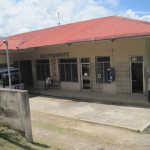 Come join the town of Santa Fe, Veraguas for the FIRST (of hopefully many) monthly clean ups or limpiezas!
Come join the town of Santa Fe, Veraguas for the FIRST (of hopefully many) monthly clean ups or limpiezas!
